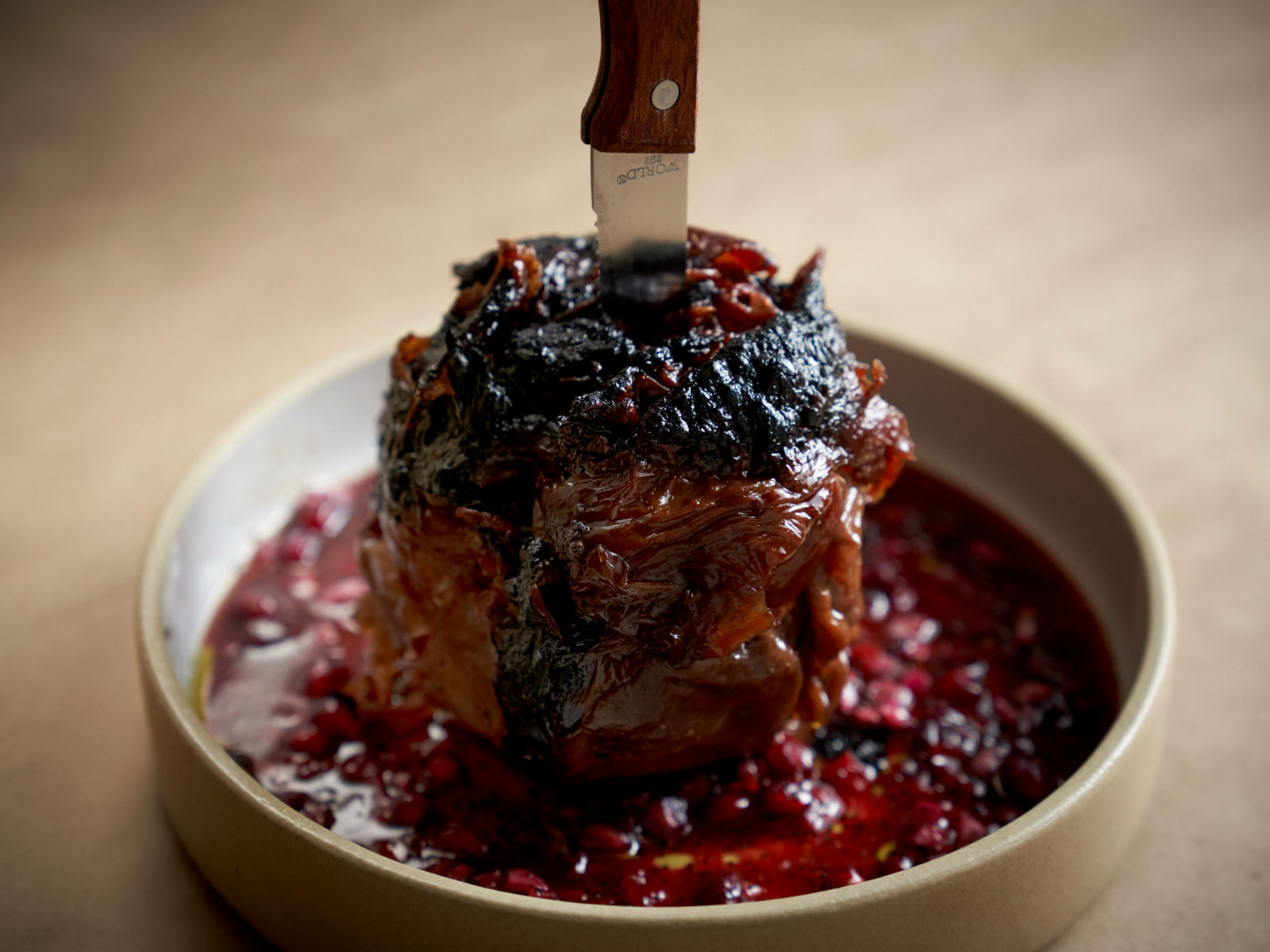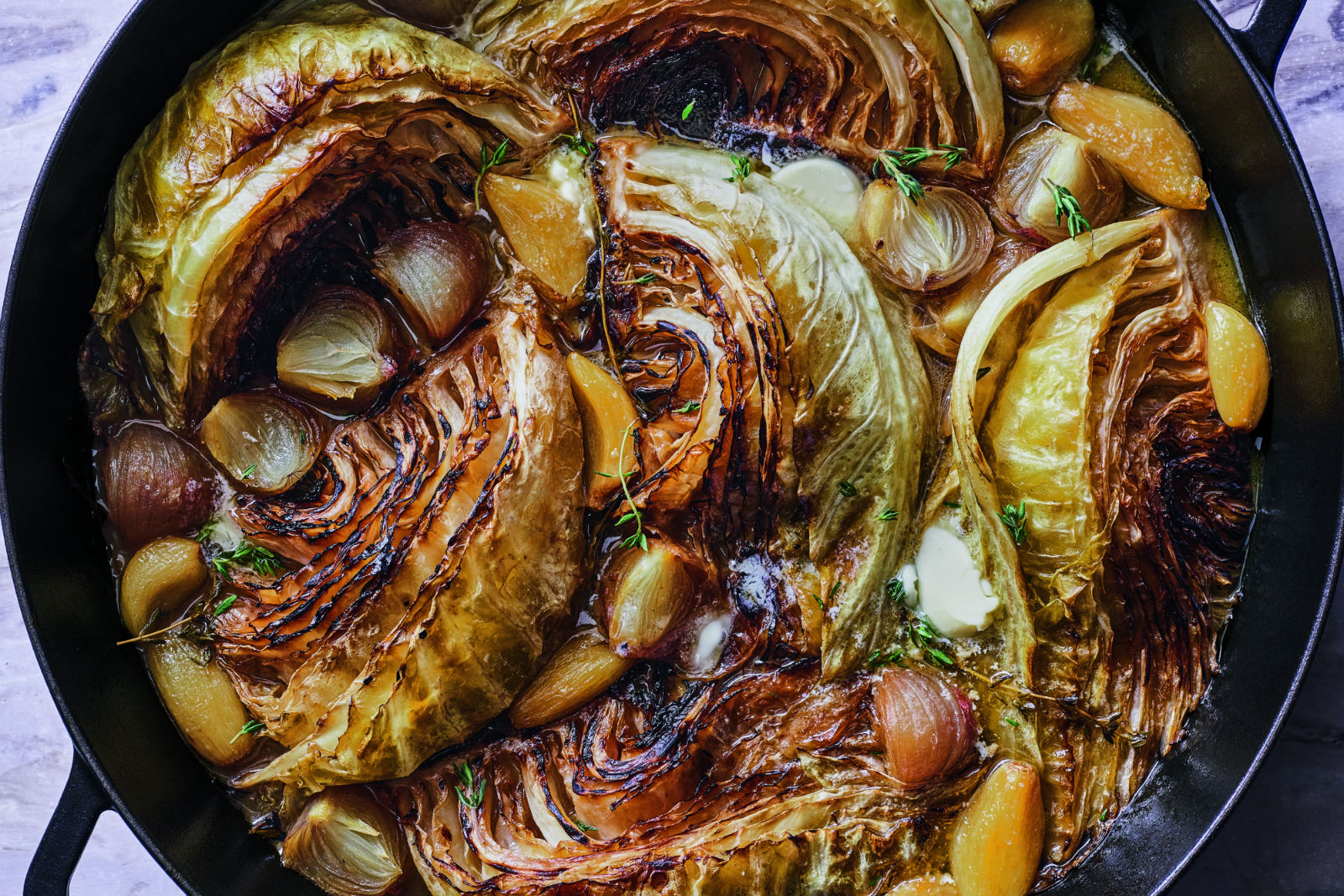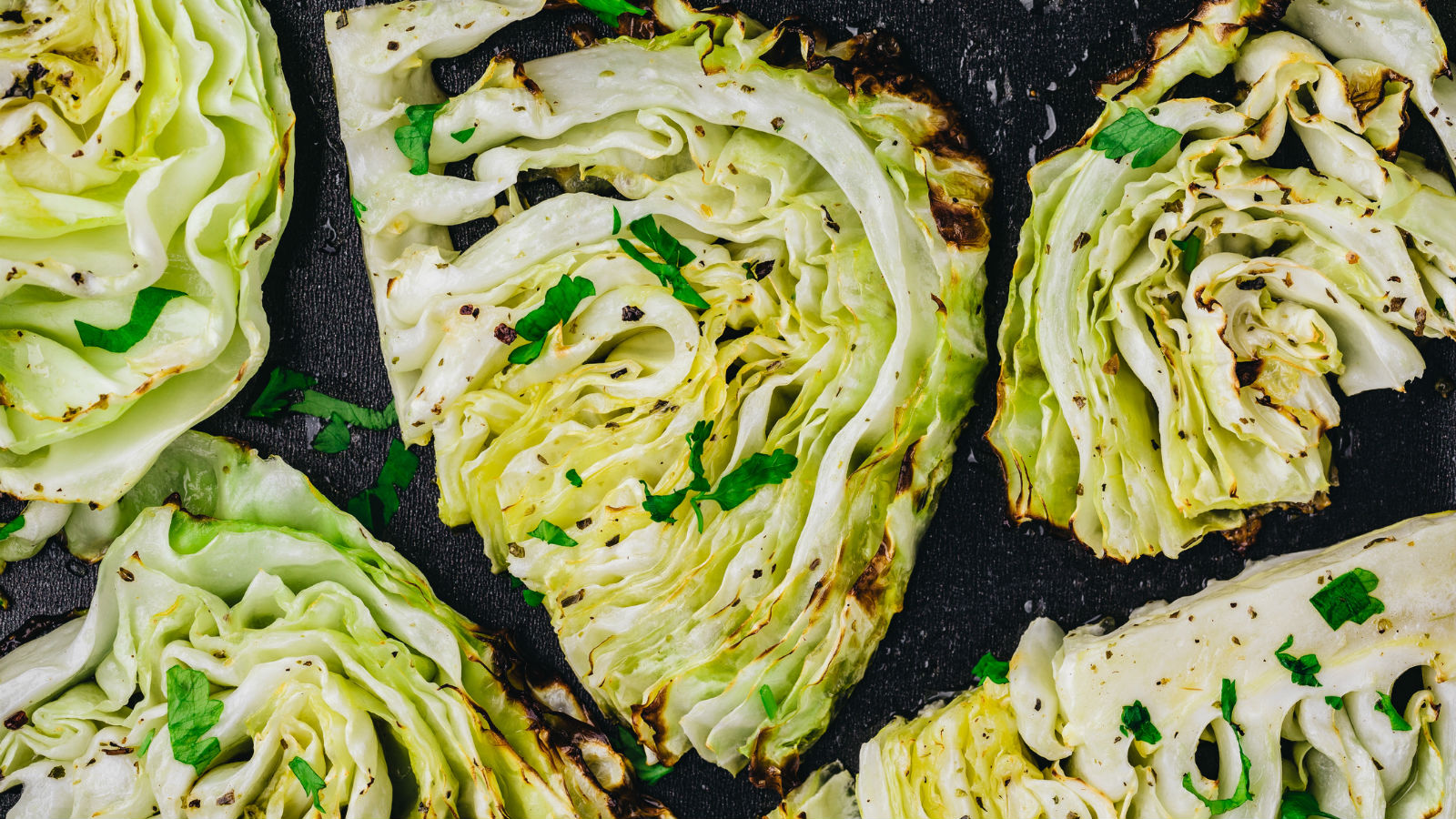As the granddaughter of four Polish Jewish immigrants to the United States, I, understandably, grew up eating cabbage. The hallway in my grandparents’ apartment building in Borough Park, Brooklyn always smelled of the stuff — a musty, slightly unpleasant, heavy odor. On Shabbat and holidays, my mother cooked cabbage the way her mother did — stuffed with beef and rice and simmered in a sweet and sour tomato sauce. We had it raw, too, in coleslaw — grated cabbage, green pepper, and carrots mixed with white vinegar, water, sugar, salt, and mayonnaise. My relationship with this vegetable began and ended with these dishes.
Recently, however, I was presented with several new ways of looking at and eating cabbage, which led me to suspect that we’re living in the time of cabbage 2.0.
Eldad Shem Tov, a chef at Lamalo (Hebrew for “why not?”), a Middle Eastern restaurant in Manhattan, has taken cabbage to the next level with a slow-cooked whole head of red cabbage. When the dish is brought to the table, you could swear that the server is bringing you a roast beef. But when you cut into it, you discover that it is a creative take on a simple, pedestrian vegetable — one that Jews have been eating for millennia.

The Nosher celebrates the traditions and recipes that have brought Jews together for centuries. Donate today to keep The Nosher's stories and recipes accessible to all.
According to Jewish food historian Gil Marks in his Encyclopedia of Jewish Food, cabbage entered Jewish cooking around 2,300 years ago, by way of the Greeks. It was even mentioned in the Talmud as being among “the six things that heal a sick person.” Marks describes cabbage as the most common cooking odor of the shtetl (remember my grandmother’s apartment building?!), where it was “boiled, braised, stewed, and pickled for sauerkraut.” According to Marks, not only is cabbage one of the oldest cultivated vegetables, but it was also the “food of the poor.”
But now you can buy a head of it for $26 at this Manhattan restaurant. And it’s nothing like what my grandmother made.
“Cabbage is nourishing and comforting, and it can be enjoyed by a meat lover and a vegan as well,” said Shem Tov. “Cabbage can be treated in so many ways — you can eat it raw, you can chop and sauté it. You can treat it like a roast, like meat, or like fish. It is an underestimated vegetable, but it is becoming more interesting for chefs to prepare and for diners to eat.”
In his version, which the restaurant calls a cabbage “shank,” a head of red cabbage is bathed in a braising liquid made of onion stock, verjus (an acidic juice made by pressing unripe, sour fruit), pomegranate molasses, a bouquet garni (bundle of herbs), and chamomile tea. It is then roasted for 12 hours in the oven and finished with silan, a sweetener made of macerated dates. The sweet and sour ingredients bring a vibrant flavor to the long-roasted cabbage. The dish is soft, succulent, deeply colored, and intensely flavored. It is no longer the lowly cabbage of the shtetl — it has been treated like royalty.

Shem Tov is not alone in his interest. Israeli-British chef Yotam Ottolenghi has numerous recipes for cabbage in his cookbooks, and he recently told me that he is working on a roasted cabbage dish for his new, yet unnamed, cookbook that features vegetables. Michael Solomonov has a hummus dish topped with sautéed cabbage in his most recent book, Israeli Soul. Einat Admony’s latest book, Shuk, features a cabbage cake filled with meat, rice, nuts, and raisins, and Adeena Sussman’s Sababa has a “melted cabbage” dish that is topped with butter and crème fraiche. You didn’t find that in the shtetl.
What does the future hold for the cabbage? Admony posited that question recently on Instagram, where she wrote, “Might cabbage be the new cauliflower?” It’s certainly popping up in all sorts of unusual ways. Stay tuned.



